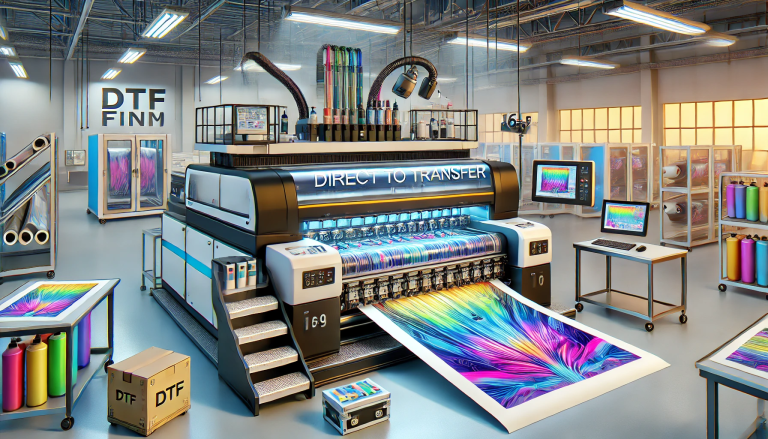“Direct to Film Printing: Pros and Cons” -MAXDTF- UV DTF AB Decal Factory, Direct Transfer UV DTF Paper Wholesale, Made in China
Direct to Film (DTF) printing is one of the latest buzzwords in the printing industry, especially when it comes to garment printing. It’s a hybrid of traditional screen printing and Direct to Garment (DTG) printing methods. As with any emerging technology, it comes with its advantages and challenges. In this blog, we’ll dive deep into the pros and cons of Direct to Film printing to help you decide if it’s the right fit for your needs.
Pros of Direct to Film Printing
- Detail and Precision: DTF can capture incredible detail, making it perfect for intricate designs and sharp images. This level of detail is often challenging for screen printing to achieve.
- No Need for Pretreatment: Unlike DTG, which requires garments to be pre-treated before printing, DTF uses a transfer method, so there’s no need for this step. This saves time and reduces the potential for errors.
- Versatility with Fabrics: DTF can print on a wider range of fabrics, including synthetics and blends, which offers more options for garment selections.
- Quick Set-Up: Without the need for screens or mesh counts, the DTF setup is faster, making it ideal for small batches or quick turnaround jobs.
- Full Color Range: DTF printing can reproduce a wide range of colors, offering vibrant and true-to-life reproductions of your designs.
Cons of Direct to Film Printing
- Durability Concerns: While DTF prints can look vibrant and sharp, they might not last as long as traditional screen prints, especially after multiple washes.
- Equipment Cost: The initial investment for DTF printers and associated equipment can be high. For small businesses or startups, this might be a deterrent.
- Slower Production for Large Batches: If you’re looking to produce large quantities of shirts or garments, traditional screen printing might still be faster and more economical.
- Environmental Concerns: DTF requires the use of plastic films for transfers. These films, when discarded, contribute to plastic waste, which is an environmental concern.
- Learning Curve: Even though it eliminates some of the traditional screen printing steps, there’s still a learning curve involved with mastering DTF printing to ensure the best results.
Conclusion
Direct to Film printing is an exciting addition to the world of garment printing, bridging the gap between screen printing and Direct to Garment printing. While it offers several advantages, especially in terms of design clarity and versatility, it’s essential to consider its limitations. Before diving in, weigh these pros and cons to determine if DTF is the best fit for your project or business. As technology continues to evolve, we can expect further refinements and improvements in this domain, making it even more efficient and accessible in the future.




